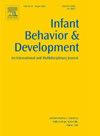Temperament development in infancy: What we have learned about the origins of individual differences in the past 25 years
IF 1.9
3区 心理学
Q3 PSYCHOLOGY, DEVELOPMENTAL
引用次数: 0
Abstract
The goal of this review article is to provide an overview of the last quarter century of infant temperament research. Beginning with a brief description of theoretical underpinnings, we focus on studies addressing early beginnings of reactivity and self-regulation. After the most widely accepted framework used to conceptualize temperament has been defined, the next section examines various methodologies for measuring temperament in the past 25 years. We then focus on work that aims to describe developmental changes and progression of temperament development. The following sections consider individual and contextual contributing factors, such as infant sex and cultural influences. Finally, we review infant temperament as a predictor of important child outcomes, focusing on behavior problems/symptoms. Overall, the past 25 years temperament research has increased our understanding of important developmental changes in different domains of reactivity and regulation, emphasizing biological underpinnings, such as underlying brain activity, as well as contributing factors (e.g., genetic/epigenetic contributions). The review ends with a discussion of remaining gaps in research and recommendations for future research, such as the need to harmonize datasets across laboratories to leverage latest quantitative methods resulting in reproducible science.
婴儿期的气质发展:在过去的25年里,我们对个体差异起源的了解
这篇综述文章的目的是提供一个概述过去25年的婴儿气质研究。从理论基础的简要描述开始,我们专注于解决早期反应性和自我调节的研究。在定义了用于气质概念化的最广泛接受的框架之后,下一节将检查过去25年中测量气质的各种方法。然后我们将重点放在旨在描述气质发展的发展变化和进展的工作上。以下部分将考虑个人和环境因素,如婴儿性别和文化影响。最后,我们回顾了婴儿气质作为重要儿童结局的预测因素,重点是行为问题/症状。总的来说,过去25年的气质研究增加了我们对不同反应性和调节领域重要发育变化的理解,强调生物基础,如潜在的大脑活动,以及贡献因素(如遗传/表观遗传贡献)。这篇综述最后讨论了研究中仍然存在的差距和对未来研究的建议,例如需要协调各实验室的数据集,以利用最新的定量方法产生可重复的科学。
本文章由计算机程序翻译,如有差异,请以英文原文为准。
求助全文
约1分钟内获得全文
求助全文
来源期刊

Infant Behavior & Development
PSYCHOLOGY, DEVELOPMENTAL-
CiteScore
4.10
自引率
4.80%
发文量
94
期刊介绍:
Infant Behavior & Development publishes empirical (fundamental and clinical), theoretical, methodological and review papers. Brief reports dealing with behavioral development during infancy (up to 3 years) will also be considered. Papers of an inter- and multidisciplinary nature, for example neuroscience, non-linear dynamics and modelling approaches, are particularly encouraged. Areas covered by the journal include cognitive development, emotional development, perception, perception-action coupling, motor development and socialisation.
 求助内容:
求助内容: 应助结果提醒方式:
应助结果提醒方式:


